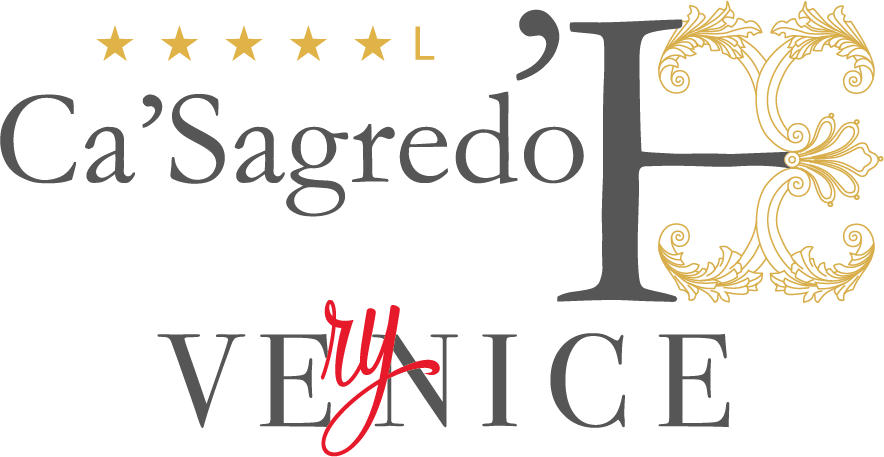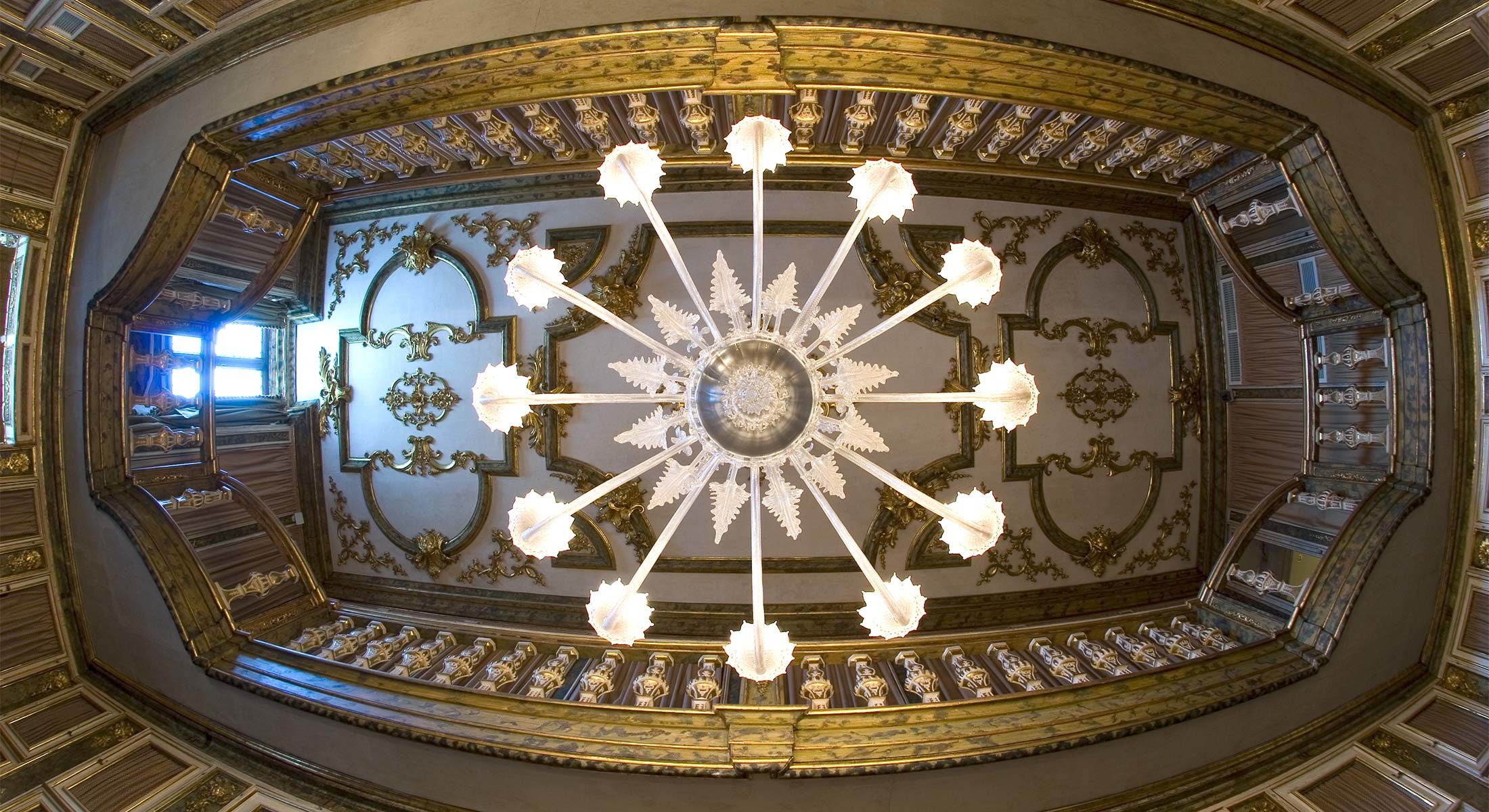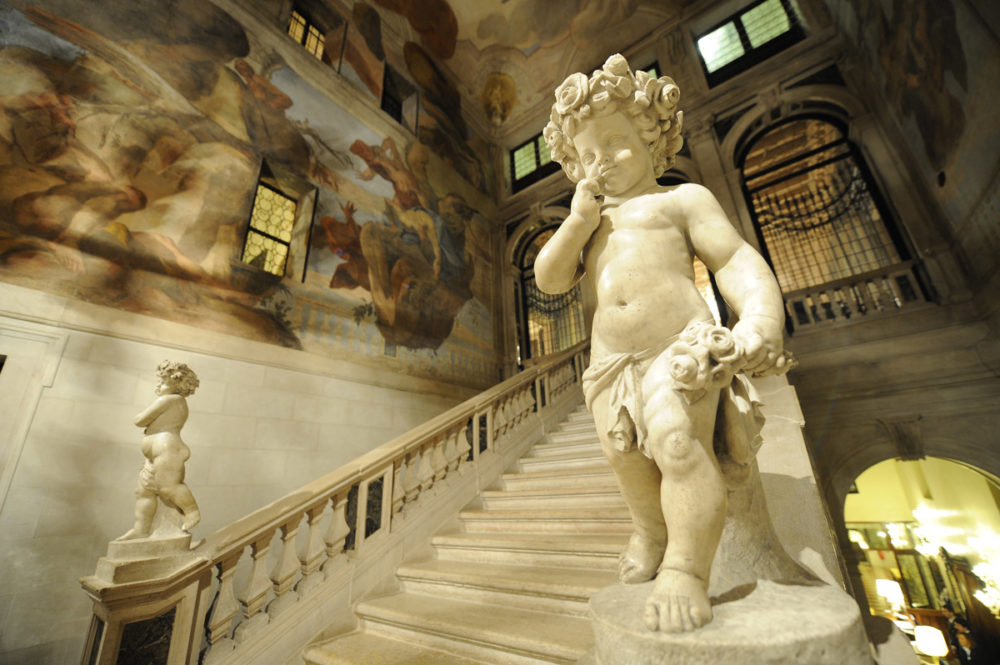The staircase was designed by the architect Andrea Tirali for Gerardo Sagredo in the third decade of the 18th century and completed in 1732 when Pietro Longhi started to paint the frescoes which still surround it.
The staircase was just a part of an overall renovation projected for the palace, undertaken by Gerardo, which included all the halls of the building and a restoration of the façade, based on a design by the architect Tommaso Temanza.
The latter project was then abandoned due to family quarrelling and economic reasons. Two marble cherubs by Francesco Bertos decorate the entrance to the staircase, glancing to the incoming guests.
The floor is in mosaic, decorated with elegant coloured volutes.
Andrea Tirali (Venice c. 1660 – Monselice 1737)
This Venetian architect was mainly known for his technical skills. His work, inspired by Palladian shapes, was part of the Classical reaction to Baroque art. He built the Ponte dei Tre Archi over the Cannaregio canal in Venice in 1688.
Francesco Bertos (1678 – 1741)
He was a Venetian sculptor who worked in Rome, Venice, Padua, Turin and Florence. Some of his works are housed in Palazzo Ducale in Turin, others in London.




